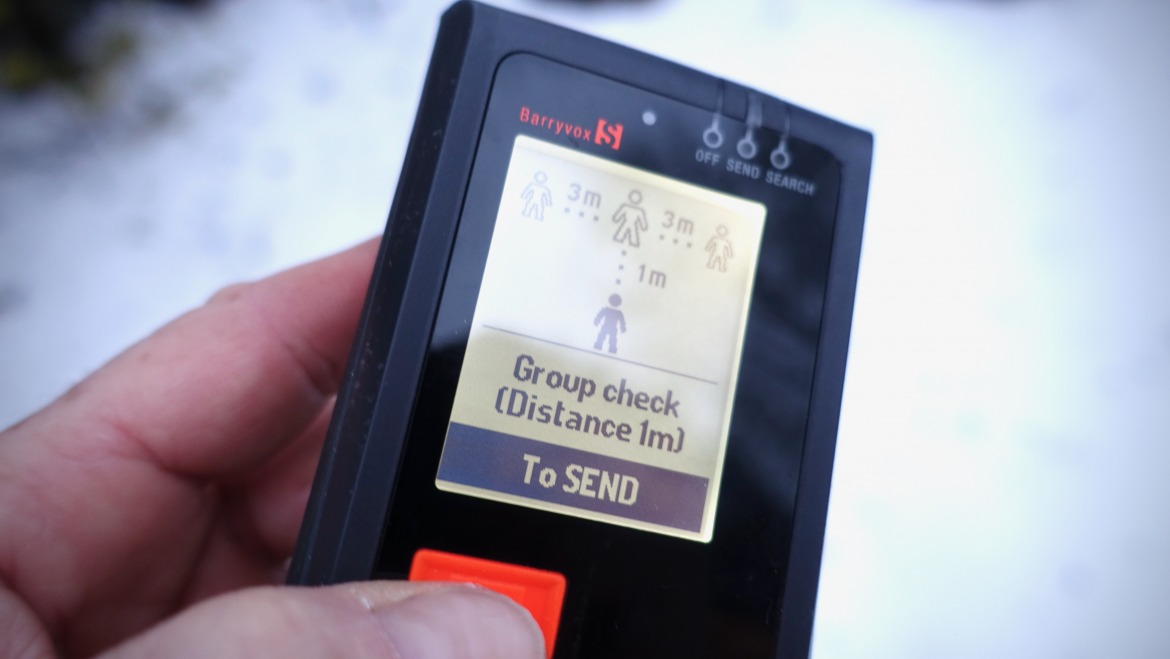
Before we start ski touring, we routinely check to see if everyone’s beacon is on and transmitting. By adding a few quick steps, the entire party can be better prepared if the unthinkable — an avalanche — occurs.
A good start for your tour begins with some basics: ensure your avalanche beacon has sufficient power, know your beacon and those of your partners, and follow through with a beacon check at the trailhead (and think about repeating the beacon check later in the day).
A version of this story first appeared on WildSnow in 2015.
A beacon is PPE, or personal protective equipment. You and your partner’s lives could rely on it. Backcountry best practices begin at the trailhead, often moments before the skiing ensues.
Before we start ski touring, we routinely check to see if everyone’s beacon is on and transmitting. By adding a few quick steps, the entire party can be better prepared if the unthinkable — an avalanche — occurs.
Battery Levels
Considering you’re checking the beacon function before the tour, ensure the beacon’s batteries are fresh. Keep spare AA and AAA batteries in your car. At the parking lot, check the charge level of everyone’s beacon and swap fresh batteries if necessary. Each beacon manufacturer provides the specs on battery life in their beacons and the recommended time to replace them. We like our beacons to show at least 60% battery power before starting a day trip.
Over the years, and on the original version of this post, we’ve learned plenty about how beacons can and cannot function properly when battery power decreases. How low can a battery go while the beacon transmits a usable signal? And what happens to send and transmit capacities with low battery power and lower temps? Consider those critical questions you’d rather not answer in the field. More importantly, it’s good to have reserve power for unplanned circumstances. Also, cold batteries can have much less power, so having some reserve electricity could be necessary during a lengthy search in colder weather, when your beacon is away from body warmth.
Beacon Check Basics
We know of some readers who make a practice of doubling up and repeating the beacon check atop the day’s last run. This practice can refocus the group on the “wicked” environment that can be the mountains. It also gives users an idea of how much battery power remains in their beacon; this could be an opportune time to swap the batteries out.
A Beacon Check does the Following:
— Checks for battery function/level.
— Ensures the screen functions.
— Each group member tests their beacon in search and send mode.
— Be familiar with the different beacons used in the group.
— It’s not a bad idea to redo the beacon check towards the end of the day (before the last run or two).
If there are different brand beacons in the group, make sure everyone knows how to turn each beacon off from transmit. During a rescue, you may have people who lose their ability to handle their beacon, and you’ll need to turn their beacon off, so their rogue signal doesn’t compromise your search. Likewise, in the case of multiple burials, you’ll want to know how to turn off a victim’s beacon after they’re extricated. Most beacons are intuitive in terms of the on/off. Still, folks in a panic situation and unfamiliar with a given beacon can easily fail this basic task (google “tunnel vision”).
Doing the “simple” practice of everyone learning to turn off every beacon in a group calls attention to the very real problem of “rogue” signals during a search — and a little practice goes a long way in preventing compromised performance during a real event.
At the trailhead, have everyone except the leader turn their beacons to search mode. Have each person pass by the leader to check their readings.
Reverse roles: leader flips to search mode while others pass by in transmit mode.
Keep your trailhead rituals simple, but don’t neglect priorities. And if you are new to winter backcountry travel, seek out good options for avalanche education in your region.
WildSnow Girl, Lisa Dawson, is the luckiest girl in the world. Also known as Mrs. WildSnow.com, she tests whatever gear she wants. She gives the WildSnow family of websites the feminine voice.
